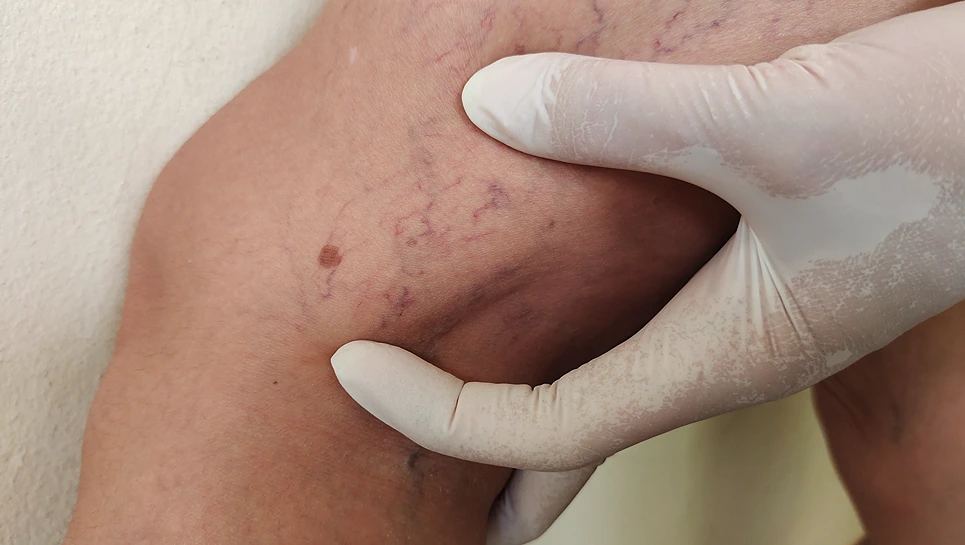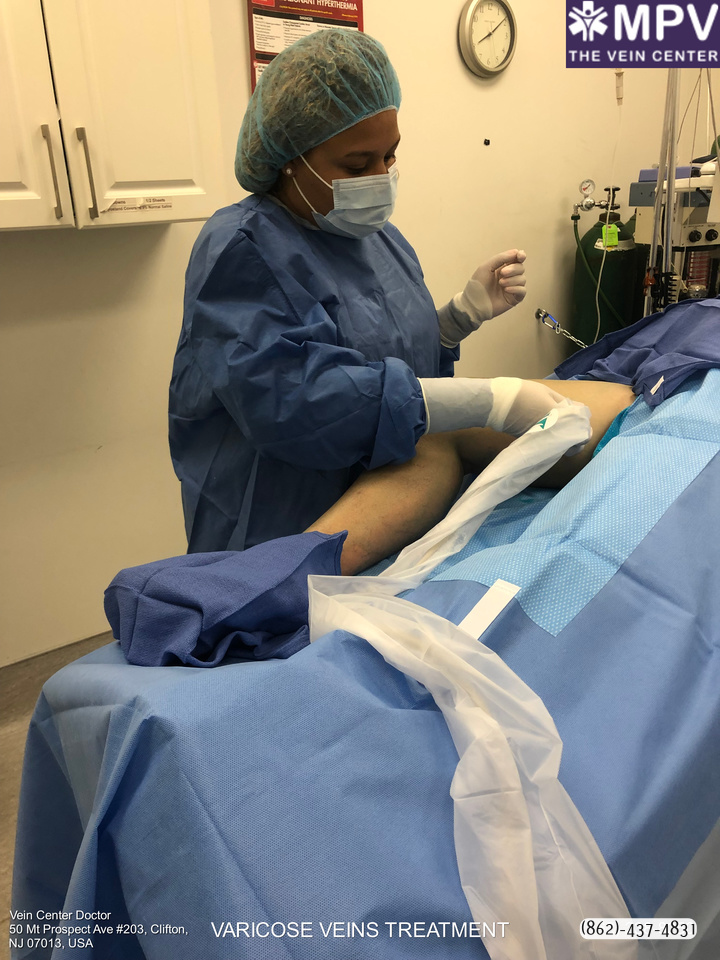When looking for information and tips to get rid of varicose veins in the lower leg, you might come across an article or two about minimal to profuse bleeding caused by untreated varicose veins. Some of these stories might seem far-fetched, but patients should see a vein clinic if their varicose veins rupture to prevent more serious conditions.
So what exactly happens when a varicose vein blows out? Ruptured varicose veins are usually caused by the increased pressure inside the blood vessel of the lower leg. The pressure buildup inside the saphenous vein causes the vein wall to stretch too thinly, making it weaker and more prone to spontaneous blowouts. Patients are advised to elevate their leg, apply pressure on it, and see a vein specialist immediately if they spot a ruptured vein.
Living with unwanted veins is a thing of the past, when you can simply schedule a free consultation with Vein Center Doctor and find your ideal solution today.
Blown veins occur when a needle accidentally injures a vein during IV treatment or a blood draw. While it sounds serious, most cases of blown veins don’t cause long-term damage. However, blown veins may also occur when a patient has a venous condition like a spider vein or varicose vein.
Visible surface veins like spider veins or varicose veins can be uncomfortable and unsightly. They’re a common cosmetic issue for lots of people – with more than 20% of adults likely developing bulging veins in their legs and other body parts at some point in their lives. According to some studies, women are also more likely to develop these larger veins than men.
When the damaged leg vein swells too much, it can suddenly rupture and cause uncomfortable symptoms. Varicose veins that blow out sound dangerous and scare off some patients, but understanding why they happen can help relieve some of the patient’s anxiety.
Bleeding is a common symptom of a blown varicose vein – the blood may leak into the nearby tissues, but it can also bleed through the skin if the patient’s skin is too thin. Aside from bleeding, here are other symptoms of blown vein that patients might experience:
Most of the symptoms of blown varicose veins can be extremely uncomfortable for some patients so they seek treatment immediately. A ruptured varicose vein in the leg also qualifies as a medical emergency which requires prompt treatment by a medical professional.
Getting the varicose veins treated immediately reduces the pain and other symptoms experienced by the patient. It also lowers their chances of developing more serious venous conditions. Remember to see a vein specialist immediately if the symptoms of the blown vein persist or worsen after a few days.
When the superficial vein has faulty valves, they make the blood flow backward (also known as venous reflux) or pool inside the vein. Venous reflux causes the affected vein to bulge, stretch, and weaken. And since varicose veins are weaker than healthy veins, they’re more prone to blowing out even with the slightest blow.
Increased pressure inside the varicose vein is the common reason why it may rupture. A few factors increase blood pressure inside the blood vessel, including:
Anyone who has varicose veins is at risk of blowing them out because of various reasons. However, some patients are more likely to experience blown varicose veins than others because of these risk factors:
If a varicose vein bleeds, patients are advised to stop the bleeding immediately before heading to an emergency room or a vein clinic. It’s crucial to get proper treatment immediately because delaying the procedure may only result in significant blood loss and other health complications.

Some of the possible complications of untreated varicose veins include:
A burst varicose vein requires immediate medical attention, but there are some general steps that patients may take as they wait for a doctor or vein specialist.
The good news is that patients can do some things to prevent their varicose veins from bursting, like:
But if your varicose veins still blow out, our experts at Vein Center Doctor are here to recommend the best varicose vein treatment for your condition. Our vein specialist may prescribe one of the following treatments first before considering surgical procedures like vein stripping:

In most cases, varicose veins can be managed with minimally invasive treatments to prevent them from bursting or worsening into more serious venous conditions. But in the unfortunate instance that one of your varicose veins bursts, don’t hesitate to call us at the Vein Center Doctor for high-quality treatments by the best vein specialists.
At Vein Center Doctor, we offer complete guidance to each of our patients to help them treat and manage their varicose veins successfully. We’re here to assist you in alleviating distressing symptoms of varicose veins, so you can enjoy a healthier life without worrying about serious complications. Call us today to book an appointment.
Find exactly what you need to get rid of your vein-related problems. Dr. Sood and the rest of our team at Vein Center Doctor are ready to help: schedule your free consultation today.
Most Insurance is accepted for treatment